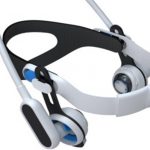Cardiac arrest in trauma patients is bad. Really bad. There are few survivors, mainly those who have some signs of life when they roll into the resuscitation room. One of the signs we look for is cardiac electrical activity, especially a narrow complex rhythm. But most of the time these patients don’t survive either. Could there be a way to fine tune the use of pulseless electrical activity (PEA) to better determine when further care is futile?
The trauma group at UCSF-East Bay did a nice, retrospective review on the use of the cardiac portion of the FAST exam to assess patients arriving in PEA arrest after either blunt or penetrating trauma. The numbers were a bit thin, but they were able to study 162 patients who had both FAST and EKG upon arrival. Of those patients, 71 had electrical activity, but only 17 had cardiac motion. However, 4 of these 17 survived (24%) vs only 1 of the 54 who did not have cardiac motion.
About a third of these 71 patients suffered blunt trauma, the remainder had penetrating injury. Of the 17 with cardiac activity, 14 were penetrating and 3 were blunt. And of the 4 survivors mentioned above, 3 were penetrating.
Only 1 of the 71 patients with PEA and no cardiac activity survived, and this was a blunt arrest(!).
Bottom line: Traumatic arrest is a generally fatal problem. However, it appears that use of the cardiac portion of the FAST exam in penetrating or blunt trauma can help fine tune the aggressiveness of resuscitation. PEA without cardiac activity is uniformly fatal (although there was one blunt survivor, the authors did specify the quality of this survival). It may be wise to forego further resuscitative efforts in PEA patients without cardiac activity because they will not survive, even as an organ donor.
Reference: The heart of the matter: Utility of ultrasound of cardiac activity during traumatic arrest. J Trauma 73(1):103-110, 2012.


